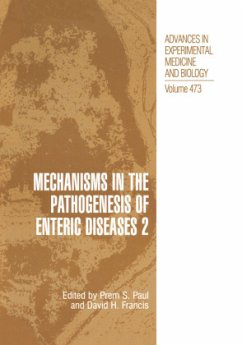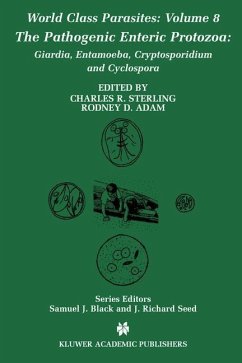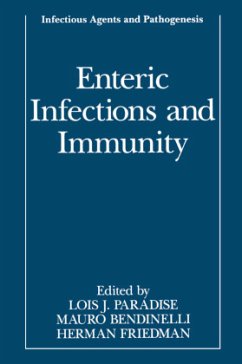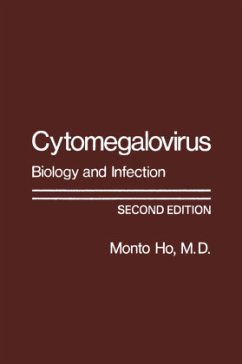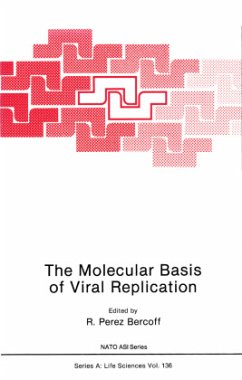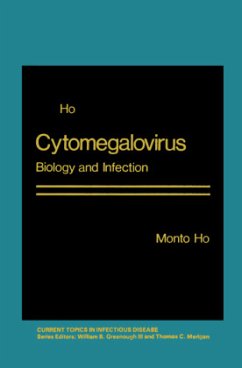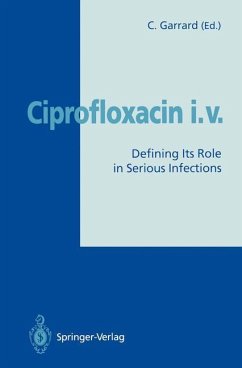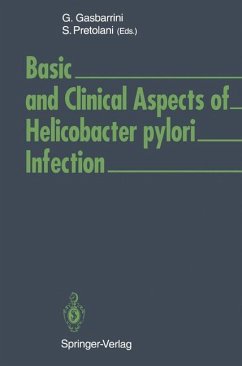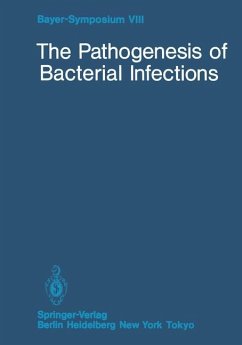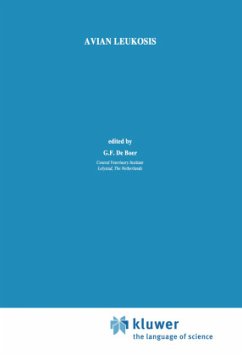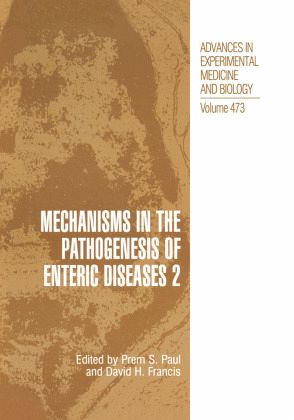
Mechanisms in the Pathogenesis of Enteric Diseases 2
Versandkostenfrei!
Versandfertig in 1-2 Wochen
115,99 €
inkl. MwSt.

PAYBACK Punkte
58 °P sammeln!
This book, Mechanisms in the Pathogenesis of Enteric Diseases 2, is an out come of the Second International Rushmore Conference on Mechanisms in the Pathogenesis of Enteric Diseases, held September 3D-October 3, 1998 in Rapid City, South Dakota, USA. Its chapters represent many of the reviews and papers presented at the conference. The meeting was organized by members of the North-Central Regional Research Committee "NC-62", a consortium of researchers of bovine and swine enteric diseases from land-grant institutions supported by the United States Department of Agriculture. The Rushmore Confer...
This book, Mechanisms in the Pathogenesis of Enteric Diseases 2, is an out come of the Second International Rushmore Conference on Mechanisms in the Pathogenesis of Enteric Diseases, held September 3D-October 3, 1998 in Rapid City, South Dakota, USA. Its chapters represent many of the reviews and papers presented at the conference. The meeting was organized by members of the North-Central Regional Research Committee "NC-62", a consortium of researchers of bovine and swine enteric diseases from land-grant institutions supported by the United States Department of Agriculture. The Rushmore Conferences were conceived as a forum for an interdiscipli nary discussion of mechanisms of infectious enteric diseases. It was intended that such a discussion would stimulate cross-pollination of ideas, and nurture synergistic collabora tions among scientists who might otherwise not interact. Enteric diseases are caused by widely divergent pathogens and parasites in broadly different settings, and affect multi ple organ systems. Some enteric diseases affect a single species, while others may affect multiple species, perhaps including human beings. Some enteric diseases were present in antiquity, while others have recently emerged. Knowledge regarding a particular disease or pathogen has frequently proven useful in understanding another disease or pathogen, because common themes in pathogenesis exist. As this knowledge base grows,strategies in the prevention and control of various enteric diseases often converge. Cross-discipli nary discussions and collaborations facilitate growth of this knowledge base, as well as development of tools for disease interdiction.





